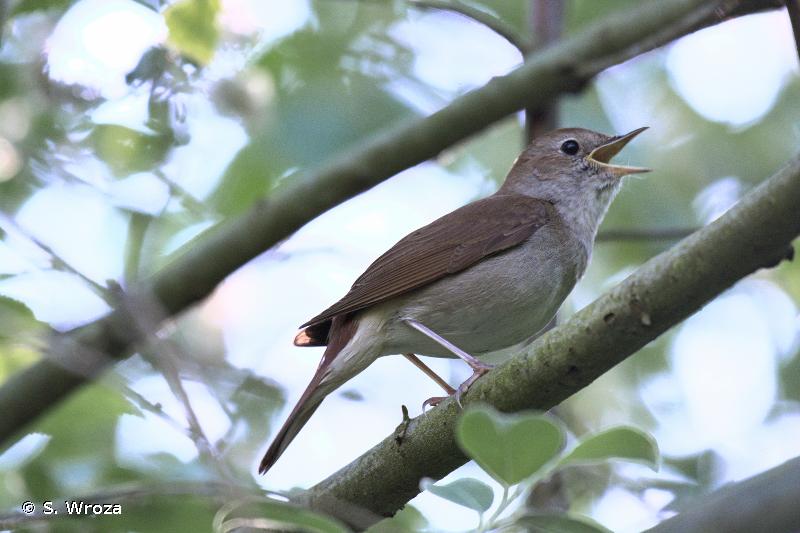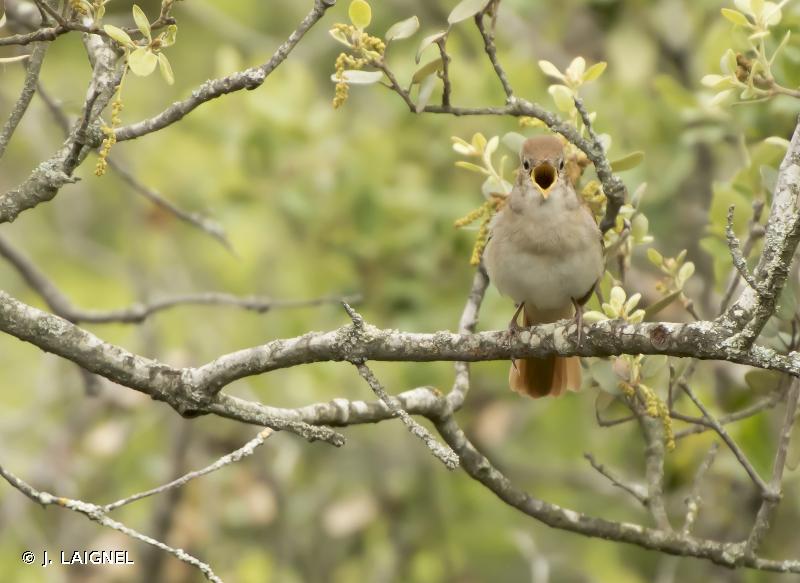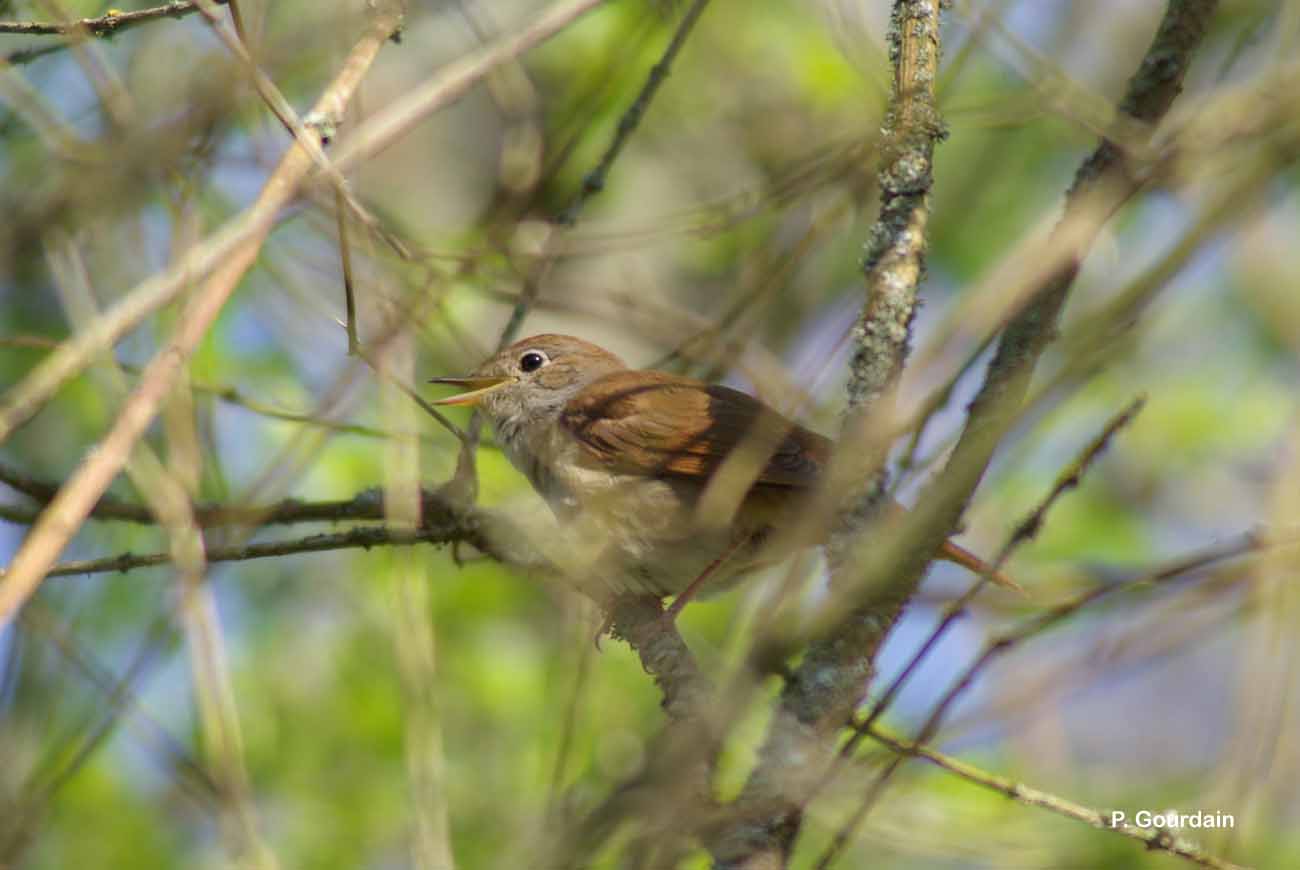
cd_nom

| Author : S. Wroza |
 |
Despite the Creative Commons license, please inform the author of the use which will be made of his photo

| Author : J. LAIGNEL |
 |
To get the picture, please visit:
Julien Laignel
Chargé de mission SNB - UMS2006-PATRINAT/MNHN
4, avenue du Petit Château
91800 BRUNOY
Tel.: 06.10.68.23.36
Mail: julien.laignel@9online.fr
Despite the Creative Commons license, please inform the author of the use which will be made of his photo

| Author : P. Gourdain |
 |
To get the picture, please visit:
Philippe GOURDAIN
Muséum national d'Histoire naturelle - Service du Patrimoine Naturel
36 rue Geoffroy Saint-Hilaire
CP 41
75 231 PARIS CEDEX 05
e-mail : inpn@mnhn.fr
Legend: Buno-bonneveau
Despite the Creative Commons license, please inform the author of the use which will be made of his photo
Taille/poids :
Longueur totale : 16 cm. Poids : 23 g en moyenne.
Diagnose :
Un peu plus grand qu'un rouge-gorge mais teintes très uniformes. Le dessus du corps est brun roux, le dessous gris brunâtre et les rectrices entièrement roux vif. Les pattes sont longues et de couleur rosée. Le bec brun foncé est assez fin et relativement long. Comme d'autres espèces vivant à couvert, le rossignol a développé des manifestations vocales sonores et fréquentes. Le chant, particulièrement puissant, complexe, mais avec des motifs caractéristiques, est largement connu pour sa beauté et du fait qu'il est émis aussi pendant la nuit.
Détermination :
Simple. Facile sur photo ou à partir d'un enregistrement.
Espèces proches :
Les jeunes, tachetés, présentent une certaine ressemblance avec ceux du rouge-gorge ou des rouge-queues.
Période d'observation :
Avril à septembre-octobre. La période de chant s'arrête en juin, sauf pour nos populations méridionales qui entreprennent une deuxième couvée et dont les mâles chantent encore en juillet.
Biologie-éthologie :
Le rossignol se nourrit de petits invertébrés collectés principalement sur le sol, dans la litière de feuilles mortes. Les insectes sont majoritaires dans son menu, avec une forte proportion de Coléoptères, mais y figurent aussi des chenilles, des diptères, des fourmis… Des baies sont aussi consommées dès la fin de l'été, avant de partir en migration.
Biogéographie et écologie :
L'aire de reproduction du Rossignol philomèle couvre les parties moyennes et méridionales de l'Europe de l'Ouest et le Maghreb. Totalement migratrice, l'espèce hiverne en Afrique tropicale, entre le Sahara et l'équateur. Le Rossignol est relativement strict dans le choix de son habitat de reproduction : il lui faut des buissons épais, au feuillage dense.
Compilé par J. Comolet-Tirman à partir des Cahiers d’habitats.(UMS 2006 Patrimoine Naturel (AFB / CNRS / MNHN)),2017
Continental
Metropolitan France
Overseas
Marine
Metropolitan France
Overseas
The map presents a summary at the 10 x 10 km grid of the observation data for the species transmitted to the SINP. These data have been subjected to validation filters.
The map presents a reference distribution layer of the species at the scale of departments and marine sectors. The presence and absence data were established by expertise within a network of partners. This reference distribution is used in the validation process of the SINP data at the INPN level.
Corresponds to a report on the basis of at least one observation proved within a period of 10 years (20 years for little-known invertebrates) preceding the year and no presumption of extinction since obtaining the last data nor doubt on reproductive and implemented nature of this population. For migratory species, the presence indicated concerns areas of reproduction.
This status is based on one or more of the following criteria:
This point covers the absence, more difficult by nature to demonstrate than presence. This status is based on one or more of the following criteria:
This status must be assigned to a department in which the presence of the species is casual.
Particular case of absence due to a proven extinction less than a half century ago (older disappearances are treated as "no probable or definite").
In the state of knowledge, we can not comment on the presence or absence in the current department. This is the default status when not comprised in one of the previous categories or whenever there is doubt.
The map shows the global distribution of the species based on GBIF data (Global Biodiversity Information Facility).
